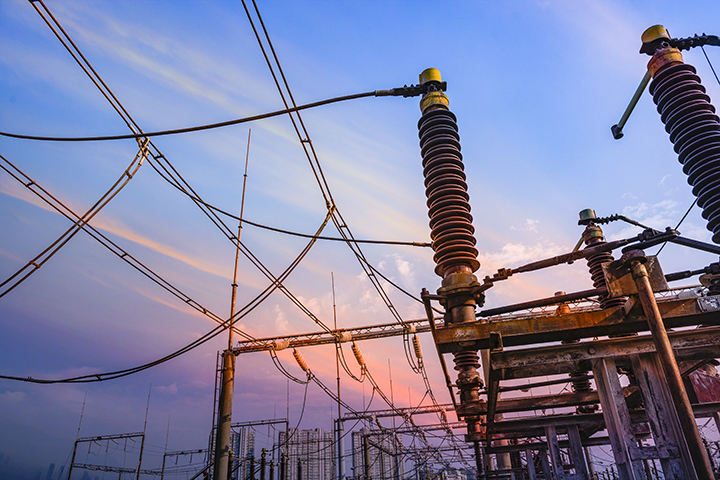Insights > Rate or Absolute? What is the appropriate CO2 emissions target for an electric utility?
Rate or Absolute? What is the appropriate CO2 emissions target for an electric utility?
08/05/2019

This question almost kept me out of the utility industry: Is it more appropriate for an electric utility to have an absolute target or a rate-based target? An absolute target is based on tons. A rate-based target is based on tons per megawatt-hour. I believe a rate-based target represents an evolution of thinking with respect to addressing climate change by recognizing an electric utility’s role in an economy that needs to decarbonize. But let me back up a bit….
When I first interviewed for an environmental job in the electric utility industry in 2001, after I had cobbled together mediocre responses to questions about my background, education and experience, the two interviewers asked me if I had any questions for them. Like all good candidates, I had done my homework and had a few questions ready. One was related to the company’s recently announced climate goal.
Me: Regarding the carbon dioxide emissions goal, why did the company decide to set an absolute target (tons) versus a rate-based target (tons per megawatt-hour)? Won’t this approach limit the company’s ability to grow?
The two interviewers glanced at each other with a hint of trepidation. I could immediately tell that the company struggled with this decision; there was even a slight indication that the two of them might have disagreed about the outcome.
Them: Well, let us turn that question around on you. Why do you think we chose an absolute target over a rate-based target?
I froze. I never expected the question to be directed to me and started thinking more about restarting my job search instead of focusing on the question. Once my brain actually stopped panicking and concentrated on the words, I was able to reach deep down into my gray matter and pull this answer:
Me: [tentatively] Because when it comes to the changes to the climate being observed and projected, the most important factor is simply the absolute tons emitted, not how efficiently those tons are emitted?
They affirmed the answer; we completed the interview and a few days later they offered me the job. Whew! I soon began working on climate issues and monitoring the company’s progress toward meeting the climate commitment that almost derailed my career plans.
The company was Entergy Corporation, where I recently celebrated my 18th employment anniversary. At the time of my harrowing interview, Entergy’s climate commitment was to stabilize CO2 emissions at year 2000 levels through 2005. Entergy was the first U.S. utility to voluntarily make such a commitment. In early 2006, we found that we had beat that target by over 20% – so we decided to raise the bar. We set a new goal of stabilizing emissions at 20% below 2000 levels through 2010 and included purchased power (if we knew the source); we then renewed that same commitment through 2020. My work still includes monitoring our performance against this commitment, and we are still beating it.
Since 2001, many things have occurred internationally and nationally on the climate science and policy fronts – difficult work culminated in the development of the Paris Climate Agreement; the U.S. signed this agreement and put forth its plan for the nationally determined contribution; and then the administration developed the United States Mid-Century Strategy for Deep Decarbonization to outline how that contribution would be met. At the same time, many scientists and research organizations were developing scenarios describing how the entire economy can reduce emissions and limit warming to two degrees Celsius above pre-industrial levels.
Over the last year, I led an Entergy team in developing our company’s own climate scenario analysis. You can read the analysis here.
But notice that the Paris Agreement and the U.S. strategy focus on reducing carbon emissions from the entire economy – the entire economy – not individual companies or even sectors. This type of broader thinking factored heavily into Entergy’s own scenario and goal development.
Consider the transportation sector, now the largest source of CO2 in the atmosphere in this country. Automobile manufacturers are moving rapidly toward plug-in hybrid and full battery electric vehicles. Charging infrastructure is being installed around the country (quicker in some areas, slower in others), which, usually, is powered by the local electric utility.
The electricity sector is undergoing a major transformation toward massive cuts in CO2 emission rates through power plant fleet transformation (coal to gas to highly-efficient gas), preservation of nuclear plants and integration of renewables, primarily wind and solar technology. Plus, the sector is deploying new technology and tools to empower customers to better understand their energy usage, such as smart meters and energy efficiency offerings.
Through Entergy’s ongoing transformation, the company has achieved an emission rate much lower than that of an internal combustion engine. Miles driven by an electric vehicle have a much lower emission footprint than that of a gasoline or diesel engine. Since the utility load may go up to power the electrification of the transportation industry, so, too, would the utility’s absolute emissions. But if the utility is functioning at a much cleaner rate than the transportation industry, emissions from the transportation industry go down. The same idea can be applied to a port or to an industrial facility. The net benefit is an overall emission reduction across the economy, leading to a cleaner planet and brighter future for us all.
That’s why our new goal for 2030 is based on an emissions RATE. By 2030, Entergy will reduce its emission rate by 50% from our 2000 level. This means that for every unit of electricity Entergy generates, we will emit half the CO2 we emitted in 2000. This plan allows us to play a crucial role in decarbonizing other sectors of the economy like transportation. Our scenario analysis provides more detail on how we’ll achieve this goal.
We are leveraging our transformation to benefit the entire economy by partnering with our customers in other sectors to help them meet their sustainability, environmental and climate goals through electrification.
Some believe that all sectors of the economy, including electric utilities, should focus on reducing absolute emissions. It’s true; this would get us to deep decarbonization faster. That’s one reason why Entergy has plans to add at least 1,000 MW of solar capacity over the next few years, some with battery storage, and is poised – as technology and economics evolve – to add 3,500 to 4,000 MW of renewable generation to our portfolio by 2030. However, electric utilities are required to serve all customers reliably, affordably, safely and sustainably. We have an obligation for utilities to balance cost and other factors with their climate goals. Coupled with the fact that the U.S. electric utility industry already has reduced ABSOLUTE emissions nearly 30% since 2005, putting the industry clearly on the right path toward reducing our impact on the environment, the low-hanging fruit is other sectors ripe for electrifying.
Entergy will continue our transformation to cleaner generation into the next decade. We look forward to helping our customers in other sectors do the same.
Rick Johnson is the director of sustainability at Entergy Corporation and an avid proponent of the preservation of our planet.

